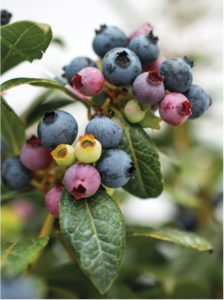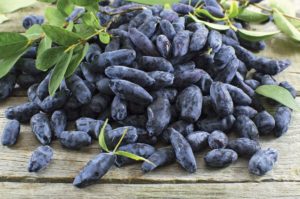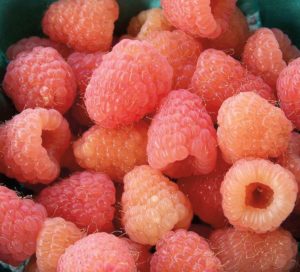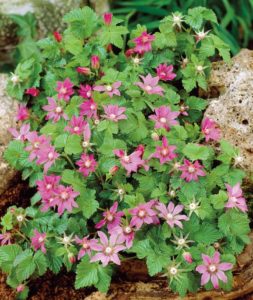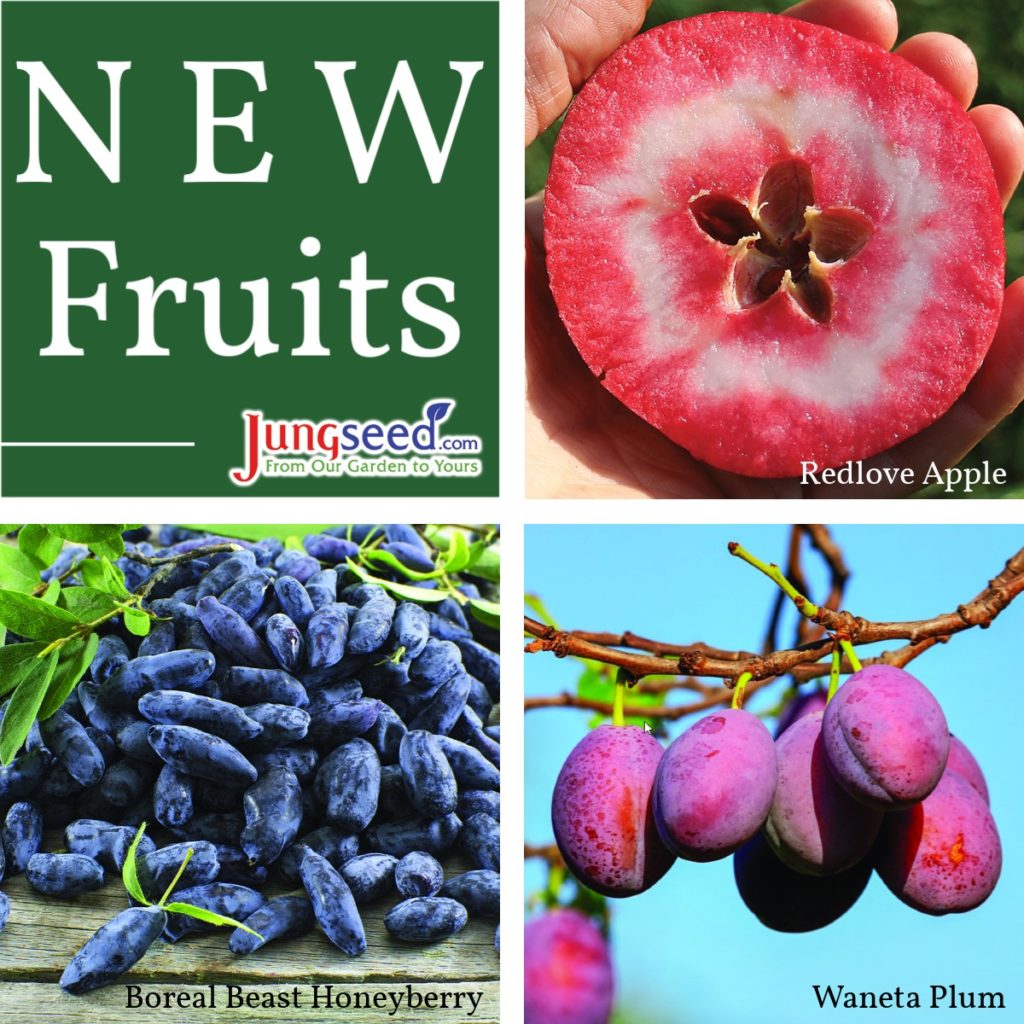
Blueberries
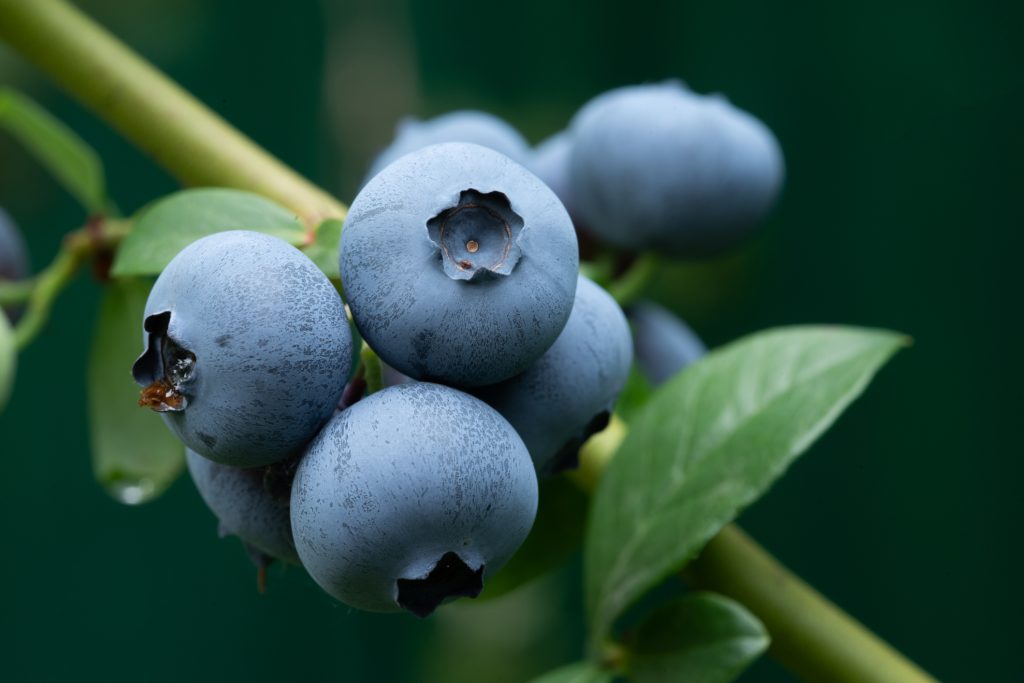
Blueberry Variety
Perpetua Blueberry
The Perpetua Blueberry is an attractive fruiting shrub. It produces two crops of fruit each season. The plant is bushy and vase-shaped. It will grow small sweet berries in mid-summer, then flower, and produce a second crop in the fall. Its glossy, dark green foliage changes to a reddish hue in the fall making it highly ornamental. Since it grows to 4 to 5 feet tall, this blueberry can be planted in the ground or a patio container. This blueberry would grow well in Zones 4 – 8. It loves full sun and acidic soil.
Tips for Growing Blueberries
- Blueberry bushes should be planted in early spring.
- Select a sunny location with well-drained soil.
- Soil should have a pH level of 4 to 6. If your soil is not acidic enough, use Aluminum Sulfate or Soil Sulfur as directed on the package label.
- The hole to plant the blueberry bushes should be 18 inches wide and 20 inches deep. Space the bushes 4 – 5 feet apart with 8 – 10 feet between rows.
- Cover with 2 – 4 inches of mulch to conserve moisture.
- Do not fertilize while planting. Instead, apply blueberry fertilizer one month after planting, in six-week intervals as directed on the label. Don’t fertilize past July 1st. Apply granulated fertilizers at the outer edge of the drip zone and water in the well.
- Blueberry roots are shallow and sensitive. Take care not to dig or cultivate directly under the drip zone of the plants.
Honeyberries
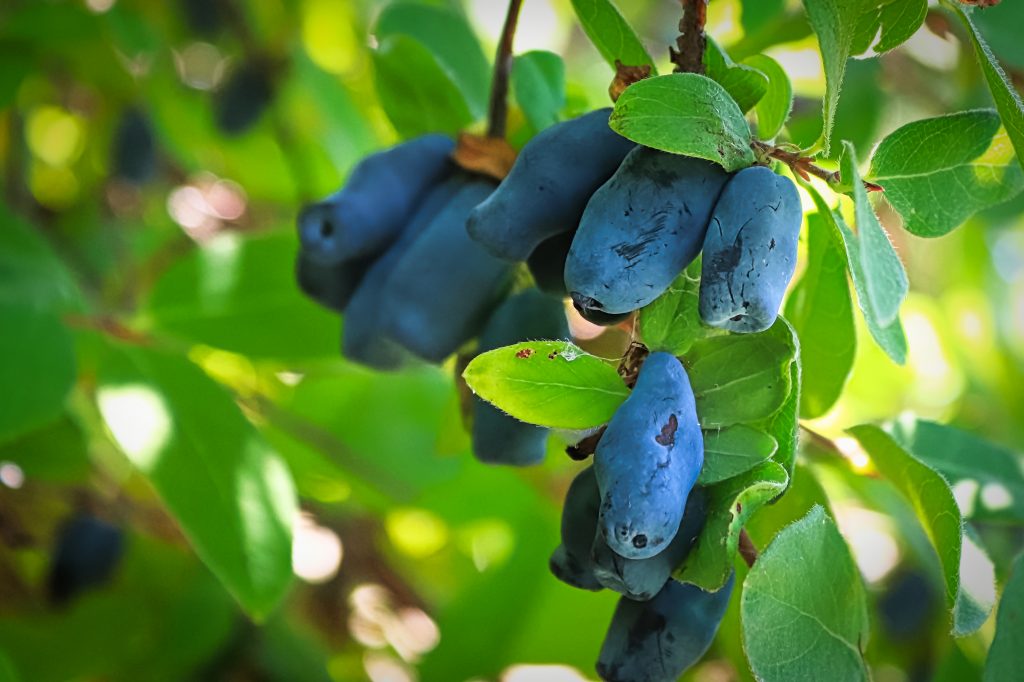
Honeyberry Variety
Boreal Beast Honeyberry
The Boreal Beast Honeyberry is one of the best-tasting honeyberries available. It is dark blue in color and has a wonderful aroma. They have a blueberry-like flavor. The firm berries will ripen in mid to late July. These honeyberries do well in Zones 3 – 8. These sturdy, upright bushes can grow 3 – 5 feet tall when planted in full sun. They are mildew resistant. It should be planted together with the Boreal Beauty Canadian Haskap which is its pollinating partner.
Tips for Growing Honeyberries
- Select a full sun to a partially shaded area with well-drained soil for planting.
- Soil should have a pH level of 5 to 7. Soil Sulfur is an excellent soil conditioner for maintaining acidity.
- The best spacing for growing Honeyberry bushes is 4 – 6 feet apart, alternating pollinating partners, in a grid-type pattern.
- For best fruit production fertilize with balanced food once in early spring and again after harvest.
- The highest fruit yields come from strong, vigorous 1-year old branches. Plants will typically produce 2 to 4 years after planting.
- Once plants are full size, prune annually to maximize 1-year old branching and remove old or damaged branches. Keeping plants open will encourage sunlight penetration to all productive branches for best fruiting.
- Cover your crop with bird netting to protect the fruit.
Raspberries
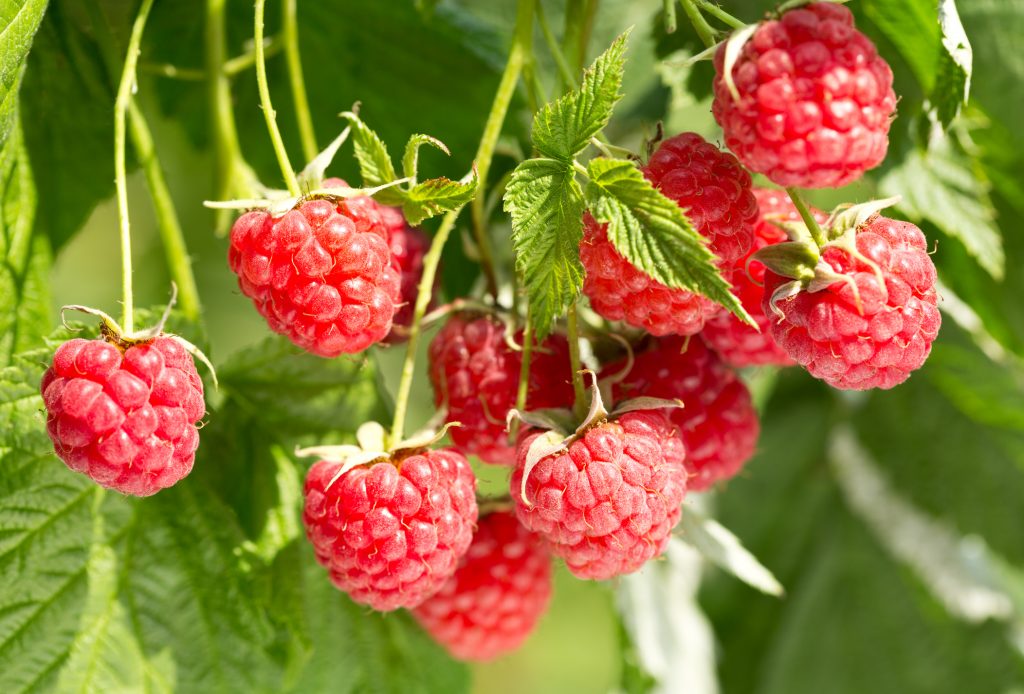
Raspberry Varieties
Double Gold Raspberry
The Double Gold Raspberry is sweet in flavor, medium in size with a firm texture. The color is a unique golden champagne flushed with pink. Ideal for Zones 4 to 7. For Zones 5 and warmer where the canes may overwinter, this variety of raspberry will fruit on the previous year’s growth. This will give you berries in summer and again in the fall. In Zone 4, treat this raspberry as a fall-bearing variety. Be sure to cut the canes back to the ground after a killing frost. The Double Gold Raspberry is highly recommended for home gardening and pick-your-own farms.
Anna Groundcover Raspberry
The Anna Groundcover Raspberry is a thornless vine that produces attractive flowers and delicious fruits. It is a hardy plant with green foliage that reaches 5 to 6 inches in height. In spring, the plant will produce pink flowers followed by small, sweet berries that ripen in midsummer. This raspberry does well in Zones 2 to 7. It requires cross-pollination with the Sophia Groundcover Raspberry. You will need at least one of each variety to produce a maximum amount of berries. This plant prefers full sun to part shade.
Sophia Groundcover Raspberry
The Sophia Groundcover Raspberry is an ornamental thornless vine that produces delicious fruits with attractive flowers. It is a hardy plant with weed-smothering green foliage that can reach 5 to 6 inches in height. The plant will produce pink flowers in the spring followed by small, sweet berries that ripen in midsummer. This raspberry does well in Zones 2 to 7. It requires cross-pollination with the Anna Groundcover Raspberry. You will need at least one of each variety to produce a maximum amount of berries. This plant prefers full sun to part shade conditions.
Tips for Growing Raspberries
- Raspberry bushes should be planted in early spring.
- These plants prefer a sunny location with well-drained soil. However, they can grow successfully in partial shade.
- Soak roots up to 2 hours before planting.
- Plant bushes 3-4 feet apart.
- Water one inch per week between spring and harvest.
- Prune the raspberry bushes annually after picking.
- Feed raspberries once in early spring.
Blueberries, honeyberries, and raspberries are some of the most popular berries to grow. There are so many varieties available. With a little care, you’ll be enjoying delicious berries all summer long!
Other Recommended Reading

- An Easy Guide To Fertilizing Blueberry Plants
- 4 Popular Wine Grapes For Hobby Vineyards
- Honeyberry: The Edible Blue Honeysuckle
At Jung Seed Co, we strive to be your go-to guide for all your gardening needs. Our YouTube channel Jung Garden Center now includes our new video series All Things Green where our experts provide gardening tips for all levels of gardeners. When you need reliable gardening advice, turn to the trusted experts at Jung.
View our new catalog online or browse our website for all of your gardening favorites. To receive info on new products, exclusive deals, and specials, be sure to sign up for our weekly email. Join our Facebook page, to discuss all things gardening!
